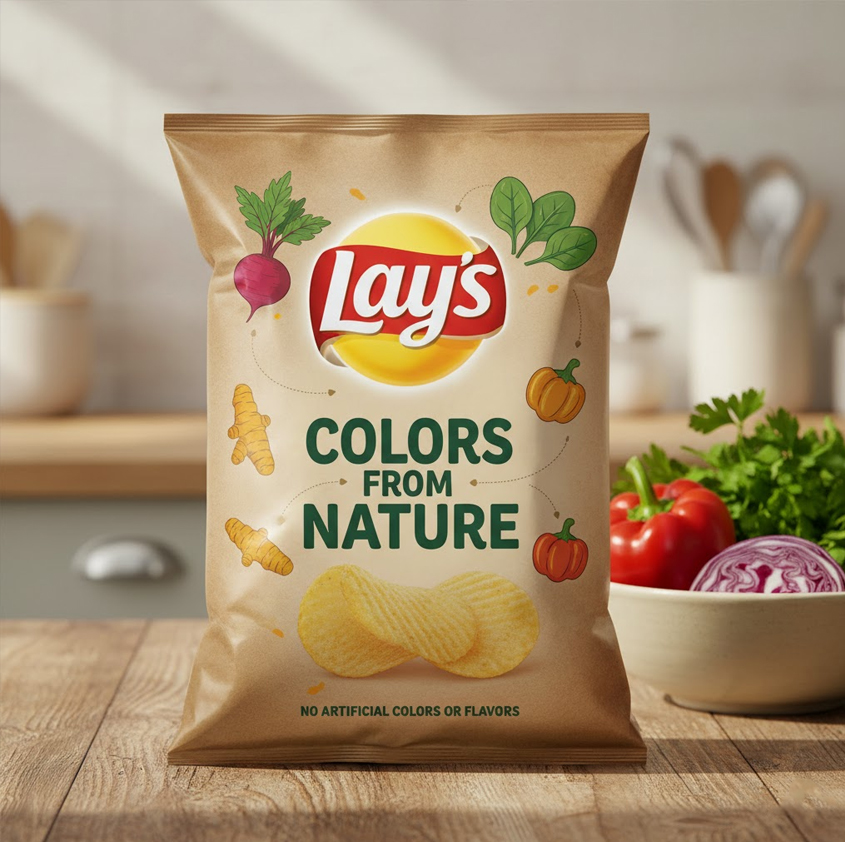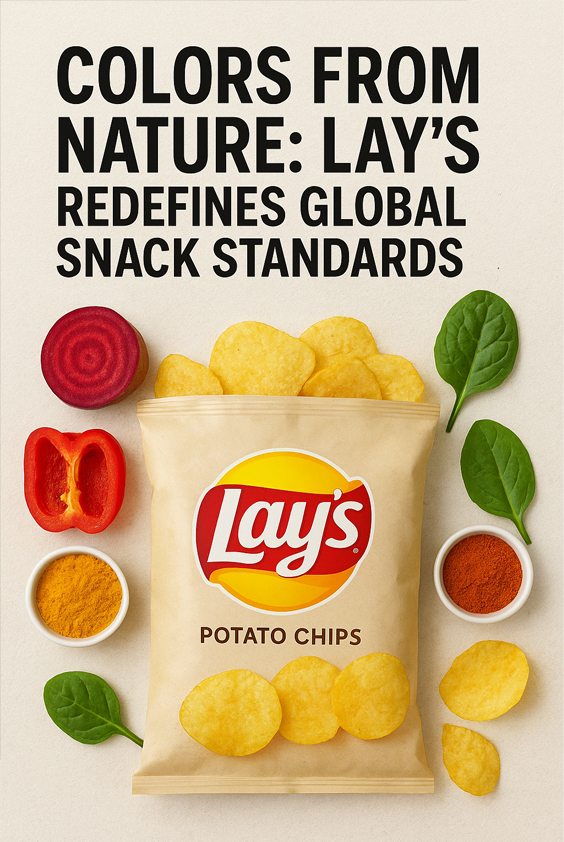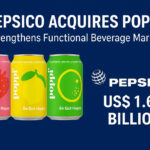Premium Biz Post – Lay’s has taken a bold step toward transparency and healthier snack options by declaring that it will eliminate artificial colors and flavors from all of its products. This transformation is part of a broader industry shift toward more natural, cleaner labels. As more consumers demand foods with ingredients they recognize, Lay’s aims to lead by example—putting colors from nature at the heart of its new identity.

The Motivation Behind the Move
Consumer preferences are shifting. Across markets, buyers are becoming more ingredient-conscious, favoring simpler, less processed foods. In recent years, a growing number of snack brands have responded to calls for clean labels. But Lay’s announcement stands out because it is applying the change across its full portfolio — not just specialty lines.
PepsiCo, Lay’s parent company, is accelerating its phaseout of artificial colors and flavors. In an investor call, CEO Ramon Laguarta emphasized that over 60% of PepsiCo’s U.S. food portfolio is already void of synthetic dyes, and that Lay’s and Tostitos will be fully reformulated by year-end. The strategy is for Lay’s to not only adapt to consumer demand but to reshape market expectations.
From Chemistry to Kitchen: Reformulating the Classics
Removing synthetic additives is more than a label change — it requires deep reengineering. Artificial colors and flavors are popular in food production because they are cheap, stable, and consistent. To replace them, Lay’s R&D teams have explored natural pigments and extracts that deliver similar visual appeal and sensory experience.
New ingredients being tested and implemented include paprika, beetroot, turmeric, spinach extract, and annatto, all of which can provide stable hues when properly processed. For flavor enhancement, Lay’s is turning to natural spice blends, herb infusions, and vegetable powders — eliminating synthetic flavor boosters in the process.
However, natural colorants can be volatile: they may fade under heat or light, shift under acidity or alkalinity, or vary by crop quality. Lay’s is using techniques like microencapsulation and blending of multiple botanical sources to standardize appearance across batches. The goal is to retain consistency without compromising authenticity.
Global Implementation & Regional Sourcing
Lay’s is rolling out this change globally, tailoring its ingredient sourcing to local agricultural ecosystems. In Europe, beet and paprika predominate as natural color sources; in Asia, options like purple sweet potato and leafy greens play a role. This regional adaptation supports supply chain resilience while reducing transport carbon emissions.
Packaging is also part of the strategy. Lay’s is introducing bags and labels that highlight the origin of ingredients, with farm imagery, matte finishes, and an ingredient-centric design. The rebrand aims to visually convey the message of “cleaner, simpler, more natural.”
Read More : ”Clay Pottery Collection Traces of Heritage from Earth and Fire”
Industry Response & Competitive Pressure
Lay’s move is likely to accelerate change across the snack sector. Major competitors, particularly in the potato chip and savory snack categories, will feel pressure to match or surpass this new standard. Already, PepsiCo plans to extend similar clean-label reformulations to Cheetos, Doritos, and other brands.
Retailers are responding by carving out shelf space for “clean label” or “free-from synthetic additives” lines. Digital platforms are also helping by labeling and tagging foods with “natural ingredients” filters, making clean-label products more visible to shoppers.
Ingredient suppliers and startups stand to benefit, especially those specializing in natural colorants, plant extracts, and stabilization technologies. The transition unlocks demand for innovation in formulations, extraction methods, and sustainable farming practices.
Health, Trust & Branding Gains
From a marketing perspective, this pivot reinforces Lay’s positioning as a brand that listens to consumer values. Trust in food brands is increasingly tied to ingredient simplicity and transparency. By shifting from synthetic to colors from nature, Lay’s is strengthening its authenticity.
Nutritionists and food researchers have noted that even moderate reductions of synthetic additives can have cumulative health benefits, especially in sensitive populations like children. While most food dyes are deemed safe within regulatory limits, public perception and demand are driving the next frontier.
Lay’s rebrand also underscores that health is now a core competitive edge. In crowded snack aisles, the brands consumers believe are aligned with wellness, sustainability, and openness are more likely to win long-term loyalty.
Challenges Ahead
This transition is not without risks. Natural extracts typically cost more than synthetic dyes, which may increase production budgets or retail prices. Consistency across large batch volumes is another technical complexity, as natural pigments vary by harvest, climate, and soil conditions.
Sensory expectations are high: consumers expect the same taste, texture, and visual appeal they’ve known for decades. Any deviation — even slight color inconsistencies — can provoke backlash. Lay’s must balance novelty and familiarity.
Regulatory barriers also matter. Natural colorants must pass safety reviews in each jurisdiction. Lay’s must verify that every substituted ingredient meets food safety standards globally.
Finally, margin pressures could emerge. If costs rise and consumers resist paying premiums, the financials will be tested. The brand’s ability to absorb or pass on costs will be key.
Measuring Success & Consumer Reception
Early reactions have been supportive: food industry analysts view this as a watershed moment for clean-label standards. Market observers expect Lay’s to spearhead a new category baseline: “snacks you can trust.” The brand’s social media and marketing campaigns emphasize not only what Lay’s is adding, but more importantly, what it is removing.
The proof will come in shelf sales, repeat purchases, and consumer perceptions. If Lay’s can transition without notable declines in flavor or appeal — and maintain price competitiveness — it may set a benchmark for the industry.
Broader Implications & Long-Term Legacy
Lay’s transformation contributes to a deeper shift in the food industry. As more major brands adopt clean-label standards, consumer expectations will normalize higher transparency and ingredient authenticity. This becomes a feedback loop: brands must evolve or risk being perceived as out of step.
On the agricultural side, demand for specific crops suited for natural colorants may reshape farming priorities — encouraging cultivation of beet, annatto, turmeric, and specialty vegetables used for pigment extraction.
In regulatory terms, Lay’s move aligns with policy trends: in the U.S., the FDA is accelerating efforts to revoke approval for synthetic dyes and fast-track new natural alternatives.
Finally, Lay’s clean-label pivot may influence other categories — from beverages to bakery to seasonings — nudging entire supply chains toward cleaner formulations.
Lay’s decision to lean into colors from nature marks a deliberate and bold repositioning in a crowded, legacy-dominated snack market. By replacing synthetics with botanical pigments, leveraging regional sourcing, and refreshing its packaging narrative, Lay’s is signaling more than a reformulation — it’s setting a new standard for what global snacking can look like in the 21st century.
This isn’t just a marketing makeover — it’s a long-term bet on consumer values, ingredient innovation, and brand integrity. And if successful, it could rewrite the rules for the entire snack industry.



